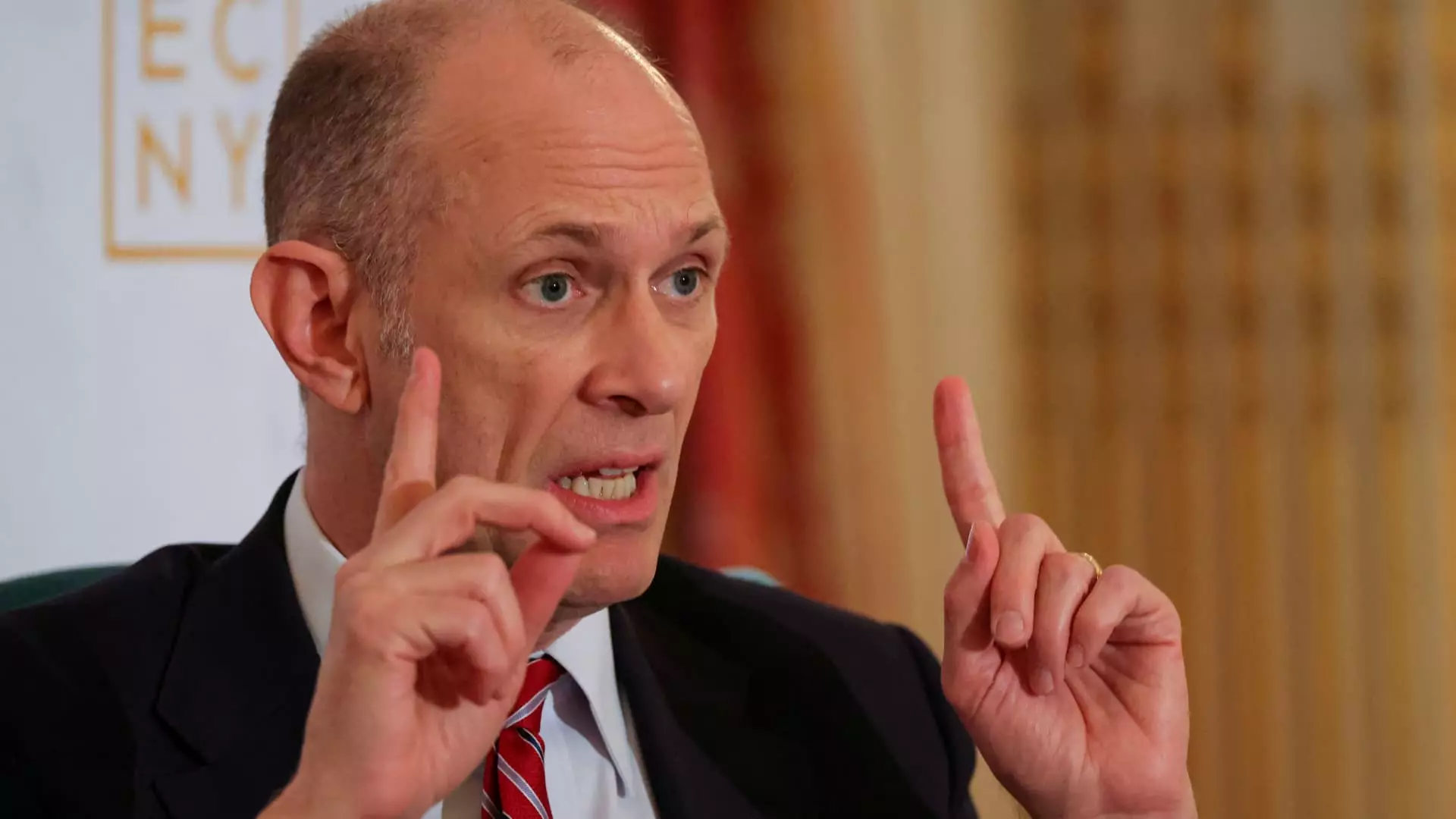The recent actions and comments from President Donald Trump regarding tariffs have introduced a level of unpredictability that should unsettle all of us. Chicago Federal Reserve President Austan Goolsbee’s remarks illustrate the dilemma facing policymakers as they navigate a complex economic landscape already fraught with uncertainty. Trump’s call for steep tariffs on European Union goods and specific tech products is not merely a trade disagreement; it is a political move that has significant ramifications for inflation, employment, and, ultimately, economic stability. While Goolsbee remains cautiously optimistic about long-term growth, the immediate impact of these tariffs could be stagflation—a term that strikes fear into the hearts of economists and everyday citizens alike.
The Tariff Threat: Short-Term Gains or Long-Term Losses?
Let’s break down the true implications of Trump’s tariff threats. By suggesting 50% tariffs on European imports and a 25% levy on Apple Inc.’s iPhones manufactured outside the U.S., Trump is positioning himself in a dangerous game of economic poker. While some may argue that boosting domestic production is a noble goal, the reality is that these tariffs will ultimately raise prices for consumers and disrupt established supply chains. Moreover, Goolsbee’s reference to the potential for stagflation highlights a concern that should rally us to challenge such reckless posturing. What are these tariffs ultimately achieving? Higher costs for consumers amid stagnant wage growth—hardly a winning combination.
Fed Policy and Presidential Interference
Goolsbee’s candid acknowledgment of the Fed’s challenges is both refreshing and alarming. Central bankers, often characterized as politically insulated, are grappling with direct interference from the White House. Goolsbee indicated that the Federal Reserve needs clarity on trade policies to make informed decisions on interest rates, but under current conditions, such clarity appears elusive. This dynamic creates a troubling situation where economic policy is swayed by populist rhetoric, rather than grounded in sound economic principles. By continually shifting the rules of engagement in international trade, the administration is jeopardizing not just domestic stability but global economic interdependence.
But let us be clear: while the Federal Reserve must assess the fallout from trade policies, the responsibility lies with our political leaders to foster a stable environment for economic growth. Goolsbee’s reluctance to commit to immediate action regarding rate adjustments underscores the broader anxiety over potential repercussions. If the central bank’s hands are tied, can we expect any genuine economic progress?
Market Reaction and Consumer Sentiment
Trump’s tariff whims have already stirred market reactions reminiscent of past financial upheavals. When the markets tremble, it’s not just the large corporations that feel the impact; it’s everyday people—working-class families struggling to make ends meet. Higher prices on consumer goods paired with stagnating wages will inevitably lead to discontent. The uncertainty surrounding tariff implementations could sway market sentiment toward defensive positions rather than innovative growth strategies. The question we must ask is: how much more can consumers bear?
Moreover, indications that the Fed may consider rate cuts amid such uncertainty reinforces the idea that policymakers are merely bandaging wounds rather than addressing underlying economic issues. If history has taught us anything, it’s that short-term solutions are rarely effective. They can lead to a buildup of economic pressure that eventually culminates in more severe consequences down the line.
Striving for Economic Clarity Amid Uncertainty
Despite the despair, there remains a flicker of optimism, as indicated by Goolsbee’s belief in the potential for growth ahead. However, optimism should not be mistaken for complacency. It requires us to act proactively. The route to economic health must not rely solely on interest rate cuts or temporary fixes but on a cohesive strategy from both the President and the Federal Reserve that prioritizes sustainable growth.
While the prospect of stabilizing interest rates and employment rates sounds appealing, it’s essential to approach the current climate with caution and clarity. We need a genuine dialogue that transcends the noise of tariffs and trade wars, focusing instead on building an economy that can withstand the tests of time and adversity. Only through collaborative governance can we hope to emerge from this economic quagmire not just intact, but flourishing.


Leave a Reply